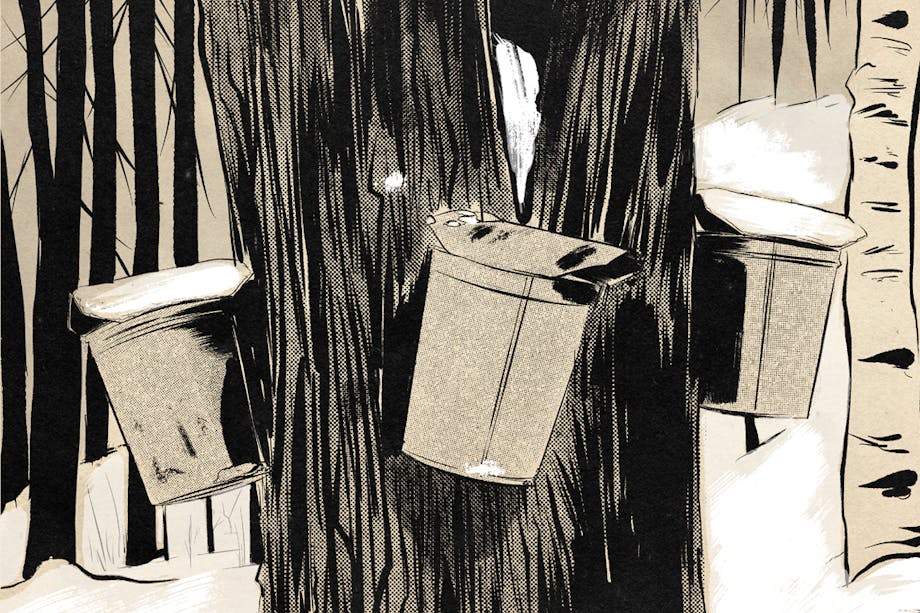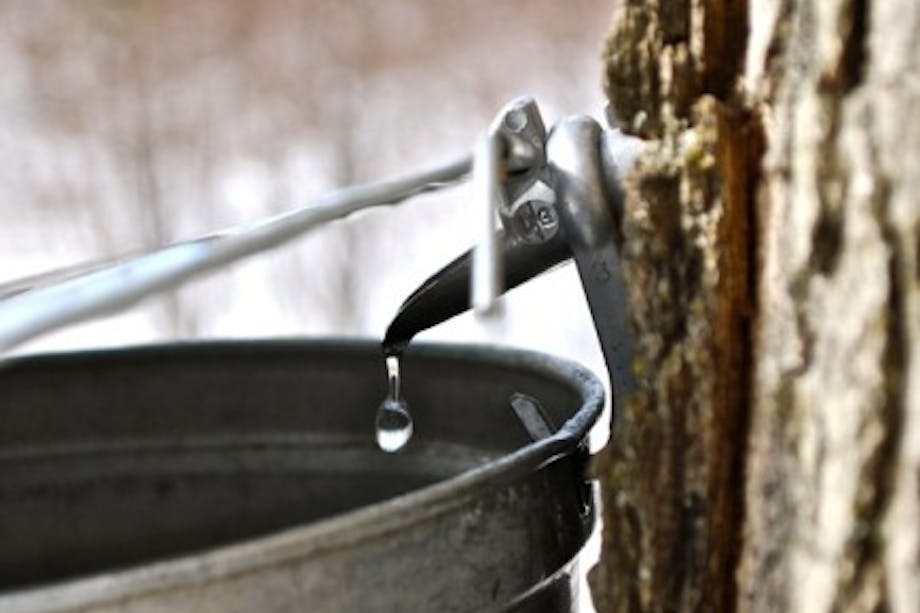On a muggy summer day in July of 2012, accountant Michel Gauvreau walked into a nondescript brick warehouse. He expected it to be a typical day of taking inventory. The storage facility, located in the small Canadian town of Saint-Louis-de-Blandford, Québec, contained 16,000 giant drums filled to the brim and stacked 20 feet high from floor to ceiling with precious, sweet maple syrup. Each barrel was worth $1,800. He decided to climb on top of one of the 54-gallon barrels to get a bird’s-eye view. He was there to count each one.
As he precariously climbed on top of the first barrel, it teetered, wobbled, and nearly tipped over. He banged on one of them; it echoed like a gong. He checked a few more and the same thing occurred. He opened them; some were empty, while others contained water. The barrels are usually sturdy, weighing 600 pounds apiece. Gauvreau immediately alerted the owners and told them that something was amiss.
The owners promptly arrived. Together they discovered that someone had tampered with over 1,000 barrels. Nearly 540,000 gallons (10,000 barrels worth) of thick, golden liquid sunshine had been stolen; 12.5 percent of the Reserve, with a street value of anywhere from $13.4 to $18 million, was unaccounted for. The culprits had siphoned the syrup. This crime is now known as one of the biggest scandals in Canadian history.

The barrels were stacked in neat, tidy, and endless rows. The inventory was a treasure of sweet Sunday goodness—pure maple sugar. They were waiting to be tapped, put into bottles, sold on the wholesale market, and poured on your French toast or pancakes. When the syrup arrives, it is tested for purity, placed in a barrel, labeled, and stacked by a forklift operator. Each label states the grade (Extra Light, Light, Medium, Amber, Dark) and the percentage. Tapping maple trees happens in the spring. Maple water flows out into either tubes or buckets, depending on the size of the operation. The water is 2 to 4 percent sugar, which needs to be boiled down to sugar concentrates. Maple syrup has to be 66 percent sugar; below that mark it is not stable, and above 69 percent it becomes a buttery-gummy-taffy-candy-like substitute.
This facility was not an ordinary maple syrup warehouse but the Global Strategic Maple Syrup Reserve, operated and managed by the Federation of Québec Maple Syrup Producers (FPAQ). This syrup Federation is the equivalent of OPEC. On any given day, they oversee a reserve of about 7.5 million gallons, monitor 75 percent of the global maple syrup supply, and control the prices. The majority of maple syrup on the market comes from Québec. FPAQ does not want maple syrup farmers to realize they have far more maple trees in Vermont, New Hampshire, and New York than in Québec. Many syrup farmers on both sides of the border need FPAQ’s blessing to produce syrup and sell it on the market, and they are not happy about this power measure. The amount of power in the hands of the few controlling supply, demand, and the price of maple syrup has led to the booming black market. This amount of unfair control and power led to some sneaky, sticky-fingered crooks to pull a fast one on the Federation’s supply.

The owners and inspectors called the FPAQ headquarters, who sounded the alarm. The small-town facility was soon buzzing and swarming with law enforcement. Who stole the syrup? It was a mystery. There were no security cameras throughout the building. Generally, there was a crew of workers there and guards each day. It had to be an inside job, but who would attempt it and pull something like this off?
The Sureté du Québec police led the investigation but were soon joined by the Canadian Royal Mounties and U.S. Customs. The syrup was hot—not with butter, powdered sugar, and poured over steamy pancakes—but stolen. The scales of justice had to be balanced, and someone had to pay for this crime. The authorities questioned nearly 300 people, issued 40 search warrants, and made approximately 30 arrests.
The prosecutor of the case discovered that the thieves had rented a space in the warehouse. While the guards weren’t at the Reserve, the hoodlums trucked the barrels to a sugar shack and stealthily siphoned one barrel at a time into their own ramshackle barrels. They loaded up their freshly full barrels and trucked them to points south and east, where the market is free. The criminals sold each barrel for more than the price of crude oil. They tried to cover their tracks by filling up the old barrels with water and left others empty in an undisturbed fashion.
So far, the courts have convicted four Canadians. They have paid fines and are serving sentences. Authorities have recovered two-thirds of the stolen syrup. The rest ended up on people’s shelves or in their bellies. This heist was one sticky situation in the history of Canadian maple syrup.




